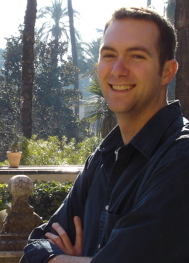Presiding Over Accidents:
Techniques for Designing Directive Interfaces
 Jeffrey
Heer, UC Berkeley
Jeffrey
Heer, UC Berkeley
jheer![]() cs.berkeley.edu
cs.berkeley.edu
Seminar on People, Computers,
and Design
Stanford University October 14 , 2005
From intelligent tutoring systems to automobile anti-sleep systems to automated photography and film-making, there is a rich and compelling design space of systems which direct human actions. By combining signal processing and sensing technologies with judicious interaction design, it is possible to craft convincing and immersive multimodal applications in which an automated system proactively guides and provides corrective feedback to human users attempting to accomplish a shared goal. However, crafting the appropriately nuanced interaction design is far from a trivial task. Even when assuming a shared goal and genuine participation on the part of users, breakdowns in interaction remain inevitable.
As human-computer interaction begins to more closely resemble human-human interaction, additional techniques for design are needed. In response to the inevitable shortcomings of recognition technologies, researchers in HCI and speech recognition have developed "mediation" techniques: interaction techniques by which users can resolve system ambiguity and error. In this talk, I discuss our efforts extending this body of work, focusing on the design of systems which proactively direct and mediate human action. Informed by a contextual inquiry of a variety of experts in human-human direction, including film and theatre directors, sports trainers, and a 911 emergency operator, I will present a series of design strategies and a corresponding design space for directive systems. I will also discuss on-going efforts for building authoring tools and evaluation techniques for supporting the design of directive interfaces.
This work was done in collaboration with Ana Ramirez Chang, Prof. Marc Davis,
Nathan Good, Ka-Ping Yee, and Prof. Jennifer Mankoff.
![]()
Jeffrey Heer is a 4th year Ph.D. student in the Computer Science Division at U.C. Berkeley, working with the Group for User Interface Research and Berkeley Institute of Design. Jeff is also an alumnus of the Xerox Palo Alto Research Center and more recently of Tableau Software, an information visualization company spun out of Stanford. Jeff's research interests lie in Human-Computer Interaction, where he has worked on theory, tools, and techniques for Information Visualization and on the design and implementation of various Ubiquitous Computing systems.
![]()
View this talk on line at CS547 on Stanford OnLine
Titles and abstracts for previous years are available by year and by speaker.